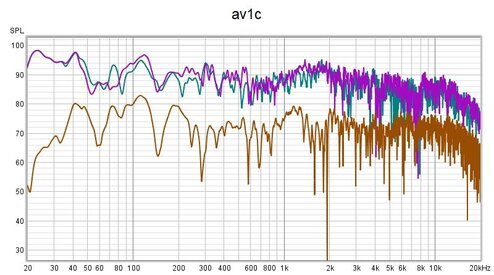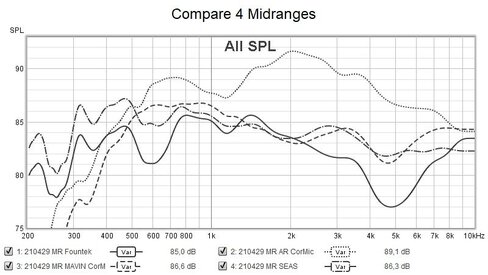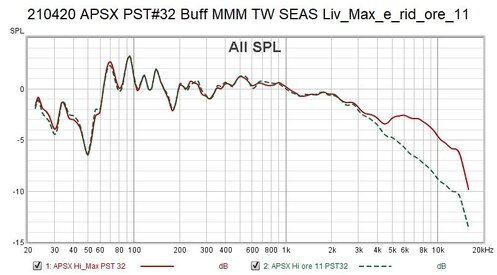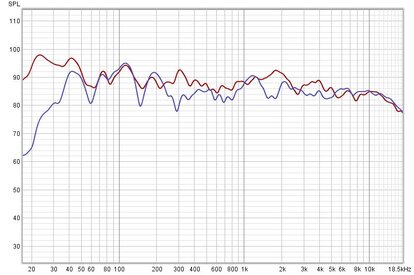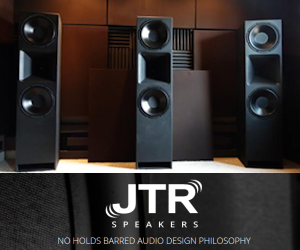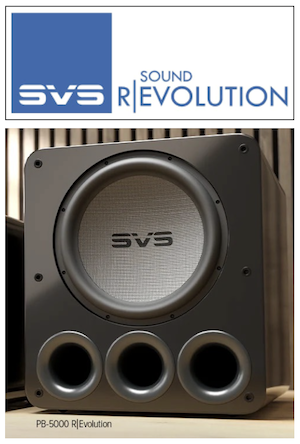distoga
New Member
Thread Starter
- Joined
- Feb 6, 2021
- Posts
- 10
More
- Preamp, Processor or Receiver
- Denon X8500H
- Front Speakers
- RBH 661SE
- Center Channel Speaker
- RBH 661SE
- Surround Speakers
- RBH 44SE
- Surround Back Speakers
- RBH 61SE
Is there a way to detect "harshness" with REW? Perhaps in impulse response or some other test? I'm trying to determine if/what I can do for crossover in the speaker or bi-amp, or if I'm our of luck because it's the natural behavior of an AMT tweeter or phase plug woofer.
I recently upgraded my beloved RBH 661-SE speakers to RBH's newer reference line. I was expecting their same signature sound but more clarify. The cabinet remained the same but tweeters, woofers, and crossovers were replaced (crossover stayed at 2.7k). The new sound does have more definition but they changed from warm to bright, which many people like but it's a bit much for me. I also noticed that there is a harshness at some frequencies. Violins and piano sound more detailed but acoustic guitars and male/female voices have lost a noticeable bit of their natural sound and are tinny, even my family/non audiophile noticed the harshness. I'm not sure if amt's trade natural sound for higher detail or spl?
The tweeters went from dome fabric to amt. If I put extreme toe on L/R and listen off-axis this reduces the harshness but I'm not sure I can do off-axis with the center channel well. The woofers are still aluminum but now use phase plugs. There's a very noticeable loss in low end sound/spl but rew didn't show a significant change in frequency response. For comparison, my side surrounds didn't get the phase plug woofer upgrade and those have more low end (even with new crossovers, same as the LCR's) and I can hear a bass guitar far, far better in the older woofer. What I can hear of the bass in the phase plug version is more detailed but very quiet and outshined by the brightness for other instruments.
I grabbed a pair of original 61-SE's I had for monitors (no modifications, stock original parts) for comparison and they are not harsh, guitar and voices are more natural, but it's very obvious they lack the detail the phase plug and amt's have. If I'm listening to music or drama movie I like the original components for 90% of the material, if it's an action movie then about 60% of the material. Changing the db/volume the speaker output had no effect on harshness/natural sound even from 50db to 90db, it was consistent.
I'm hoping there's a way to determine/evaluate the new components and see if there's something I can do, other then rebuild the speakers myself with the old parts I got back and sell/eat the new parts. Also to determine if I should look into the crossovers as the difference or the tweeter/woofers first for harshness and loss in bass spl.
I recently upgraded my beloved RBH 661-SE speakers to RBH's newer reference line. I was expecting their same signature sound but more clarify. The cabinet remained the same but tweeters, woofers, and crossovers were replaced (crossover stayed at 2.7k). The new sound does have more definition but they changed from warm to bright, which many people like but it's a bit much for me. I also noticed that there is a harshness at some frequencies. Violins and piano sound more detailed but acoustic guitars and male/female voices have lost a noticeable bit of their natural sound and are tinny, even my family/non audiophile noticed the harshness. I'm not sure if amt's trade natural sound for higher detail or spl?
The tweeters went from dome fabric to amt. If I put extreme toe on L/R and listen off-axis this reduces the harshness but I'm not sure I can do off-axis with the center channel well. The woofers are still aluminum but now use phase plugs. There's a very noticeable loss in low end sound/spl but rew didn't show a significant change in frequency response. For comparison, my side surrounds didn't get the phase plug woofer upgrade and those have more low end (even with new crossovers, same as the LCR's) and I can hear a bass guitar far, far better in the older woofer. What I can hear of the bass in the phase plug version is more detailed but very quiet and outshined by the brightness for other instruments.
I grabbed a pair of original 61-SE's I had for monitors (no modifications, stock original parts) for comparison and they are not harsh, guitar and voices are more natural, but it's very obvious they lack the detail the phase plug and amt's have. If I'm listening to music or drama movie I like the original components for 90% of the material, if it's an action movie then about 60% of the material. Changing the db/volume the speaker output had no effect on harshness/natural sound even from 50db to 90db, it was consistent.
I'm hoping there's a way to determine/evaluate the new components and see if there's something I can do, other then rebuild the speakers myself with the old parts I got back and sell/eat the new parts. Also to determine if I should look into the crossovers as the difference or the tweeter/woofers first for harshness and loss in bass spl.
Last edited:







